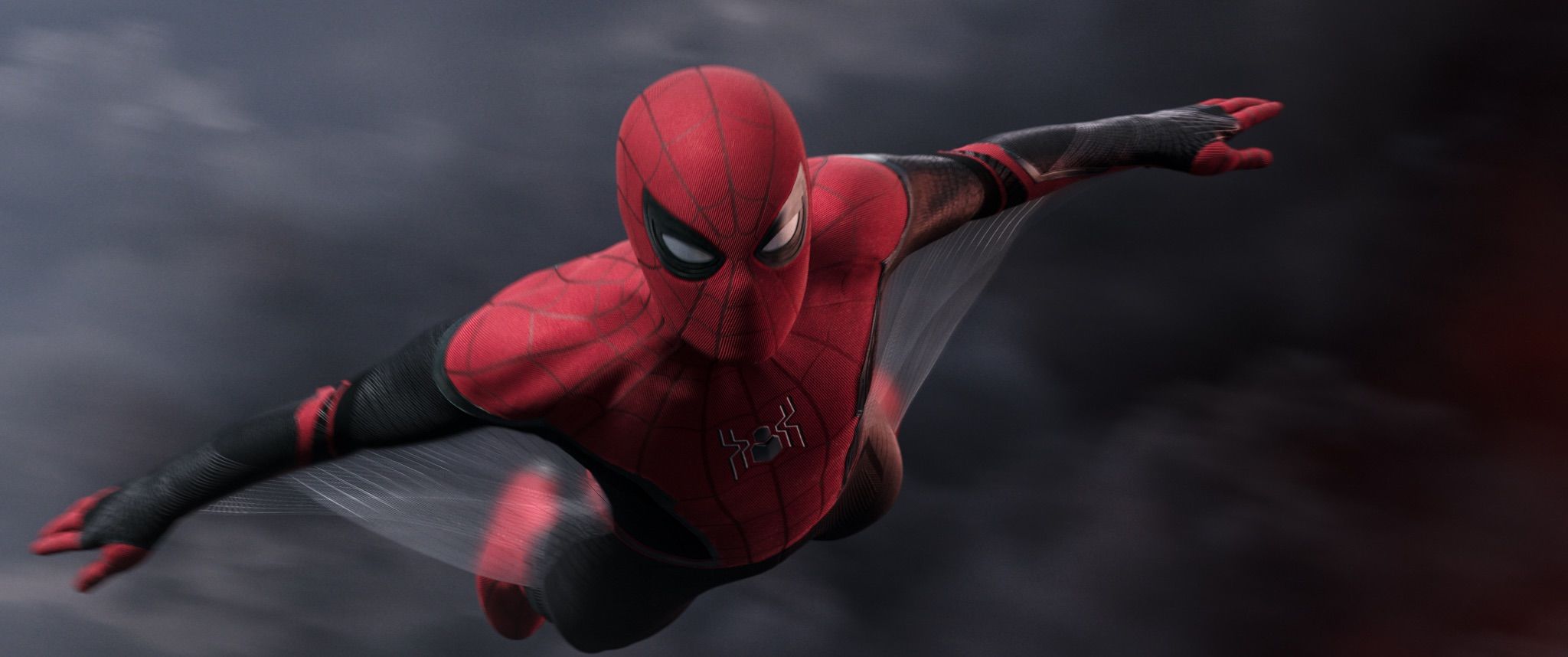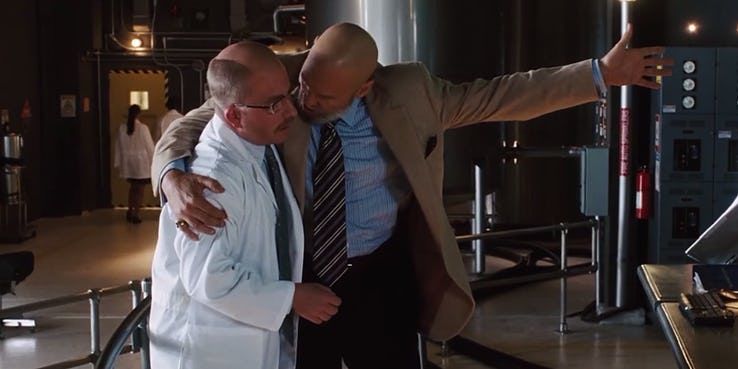Create a free profile to get unlimited access to exclusive videos, sweepstakes, and more!
Spider-Man: Far From Home writers explain the Iron Man retconning and Multiverse move

It no longer requires a special Infinity Stone to time travel across the Marvel Cinematic Universe, just a deep knowledge of its lore, a fun idea, and buy-in from the bosses.
This spring's blockbuster crossover Avengers: Endgame sent the heroes that survived Thanos' humanity-cleansing Snap back through some of the franchise's most seminal moments, taking the audience on a tour of major battles and treasured memories. A few months later, Spider-Man: Far From Home, a decidedly smaller story set after Endgame, also brought fans back through a few prior Marvel movies, but in a very different way.
**SPOILER WARNING: This story contains spoilers for Spider-Man: Far From Home.**
With nearly two dozen movies and several TV series spread across 11 years, the MCU has grown so vast and detailed that past events and supporting bit characters are now prime candidates for further exploration. Far From Home shows that no incident is too small to create a major ripple effect in the fictional universe years later if the writing is clever enough.
"I think everyone at Marvel learned that the more you can lean into the actual MCU, make it organic, bring back characters, bring back plot points, the stronger it is that makes it feel," co-screenwriter Chris McKenna tells SYFY WIRE. "As a writer, it's easier to poach and cherry-pick ideas from the MCU."
For Far From Home, McKenna and co-writer Erik Sommers dug into the first few Iron Man movies and the world of Stark Industries. Most significantly, they returned to the holographic BARF technology that Tony Stark used in Captain America: Civil War and gave it a new backstory, one that would justify inventing new characters and new threats.
"Once we hit on the idea of using Tony's tech against Peter and the world, it became fun to tie Quentin into Tony's life," McKenna says. "If Quentin was a part of Tony's life as an employee and actually developed the holographic technology, it would just seem really fun."
Quentin refers to Quentin Beck, the toxic, megalomaniacal Steve Jobs wannabe played with laser-locked determination by Jake Gyllenhaal. In a flashback, the actor is digitally inserted into a new angle of a scene from Captain America: Civil War (2016), stewing backstage as Tony presents — and in his opinion, wastes — his life's work. This provides Beck with the motivation to organize a number of fellow former Stark employees and other past participants in an effort to reclaim their work.
What results is a nerdy rogue's gallery of disgruntled ex-employees working with Beck to create the "Elemental" illusions, which featured massive monsters rising up to destroy cities until a caped, fishbowl-wearing superhero named Mysterio (really Beck) swoops in to save the day. Each member of this group serves a function, from screenwriter to weapons expert (they really did some damage to the cities, even with much of their work focusing on holograms).
"The villain is always important, but you always want your villain to have cool minions, if you will, or a cool team," Sommers says. "And once the decision was made that they were all going to be former employees of Stark Industries, then someone on the creative team had the idea to dig into those flashbacks."
One of the other prominent flashbacks actually qualifies as a flashback, no doctoring required. In a surprise designed for long-time fans, the movie reintroduced William Ginter Riva, a scientist employed by the villainous Obadiah Stane in the first Iron Man movie way back in 2008. The character, played by Peter Billingsley, is shown in a flashback on the receiving end of one of Stane's many tantrums, which evidently fueled a whole lot of bitterness — Riva now works for Beck, who is only a marginally nicer employer. Riva is in charge of the deployment of drone technology and still unable to fully please his boss.
Incidentally, the director of the first two Iron Man movies, Jon Favreau, features heavily in Far From Home, with his character Happy Hogan serving as the torchbearer of Tony's legacy and new mentor to young Peter Parker (Tom Holland). But while he helped originate the Riva role, and offered plenty of improvised line punch-ups, Favreau wasn't much involved in the retconning. In a way, that's surprising — the role is just Billingsley's third on-screen appearance since the first Iron Man, unless you count all those Christmas Story TV marathons.
"I think he was probably pleased to hear that Billingsley was getting roped back into the MCU and had to wear a bald skull cap and all that nonsense," Sommers says, laughing. "But specifically regarding the Easter egg crew members from Iron Man 1 and 2, I don't think he was weighing in on that."
The other major element that Far From Home borrows from past Marvel movies was an even larger bending of the space-time continuum — or, at least a head-fake in that direction.
Throughout the movie's first half, we're led to believe that Beck is from another version of Earth in the Multiverse, the first time that concept is discussed in the Marvel Cinematic Universe. It feels like a major development, especially on the heels of the Multiverse's use in last winter's animated hit Spider-Man: Into the Spider-Verse, but as it turns out, Beck was making the entire thing up. Given that Spider-Verse is still a fresh memory — it just hit Netflix, in fact — it made for an extra-devious switcheroo.
"Everyone involved in this movie was a big fan of Spider-Verse," Sommers says. "I think the idea to put the multiverse concept into this movie came from wanting to dig into stuff from the comics and have that seem like a credible backstory for Beck. If these things attacked another earth and now they were here, how is that going to work? We just wanted to try and make a story that Peter would believe and then would excite the audience as well, before we just pulled the rug out from under everyone."



























